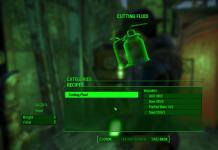Name Vivian Maier well known to those interested in the history of American photography. The story of the governess, who spent her entire life fascinated by street photography and kept her film footage but never published her work, gained worldwide fame after her photographic archive was bought at auction in Chicago for $400 by real estate agent John Maloof.
During her lifetime, not a single one of her works was even published.
In 2009, real estate agent John Maloof bought several boxes from a storage warehouse that belonged to an unknown person. In these boxes he found about 100,000 negatives and undeveloped films. As he began to scan them, his breath caught in his throat.
The negatives began to turn into great photographs that were taken in the 60s and 70s. These photographs belonged to Vivian Maier. The very next day, John received more than 200 offers to make a film about her and her life.
Vivian took photographs all her life, but never showed her work to anyone. Snapping 200 films a year, she developed them in her own room, turning it into a darkroom.

The question of one’s own creativity and art for women too often begins with one and the basic: “How is it even possible to be a woman and at the same time be an artist?” Or, in a more direct version: “How to survive if you are a woman and want to seriously engage in art? How to find a place for this? Money? And especially time? Despite the fact that there is little information about the life of Vivian Maier, even from this information it is clear how conscious and independent her personal strategies were.

Mayer's genre and language is street photography, capturing everyday life. She creates a plot as if out of nothing - from everyday scenes that usually go unnoticed and never seem worthy of special attention. Children playing on the beach. A drunkard being led away by the arm.

Crying girl. Dump of boxes. Quarrel with a policeman. Conversation between older women. The faces of random passers-by. She is interested in details: people’s hands, legs, shoes, the texture of a charred chair, a sign for an eatery, a poster, a fragment of a dress or hairstyle. How much more ordinary? Just as in a conversation you can learn more about a person by slips of tongue and intonation than by words, so Mayer in his photographs captures details as slips of the tongue, unintentional and unconscious, and therefore the most accurate and genuine evidence of reality.

The micro-scene formed by the frame takes on the scale of an event. Here Mayer is filming children walking home from school: what’s so interesting about this, it would seem? But in three minutes we manage to see a small individual gesture in each child passing by, watch how they react to the camera, look at clothes and hairstyles, recognize ourselves or our children and acquaintances in the children, marvel at the similarities, marvel at the differences. And so on in every frame. Therefore, after looking at about 30 photographs and several films, one can clearly imagine an accurate psychological portrait of Chicago and New York in the 1960s and 1970s.

She never made money from her hobby; moreover, her circle of acquaintances never knew about this passion for photography. And only after death, by chance, these shots became part of history.


She lived most of her life in Chicago and worked as a governess for wealthy families. In her free time, Vivian wandered the streets of her city with a camera. The photographs taken very well convey the culture of American life in the middle of the last century.






She wore men's trousers, men's shoes and almost always a wide-brimmed hat. Remembering what she was like, her former students described their nanny this way: “She was a socialist, a feminist, a film critic, and one of that breed of people who always tell the truth to your face, no matter what it was.”


Another characteristic feature of Mayer's photographs is the attention to vulnerability and intimacy. Women, children, old people or elderly people, African Americans, poor people, homeless people, animals, and hard workers most often appear in the frame. Lovers, vulnerable in their sincerity and the inability to hide the intimacy that has arisen between them. People on the beach, vulnerable in their bodily awkwardness and nakedness. She often chooses an angle from the back or side, and films sleeping people. If it's a plot for a movie, then she's interested in things like an accident, the aftermath of a tornado, or the demolition of a building. At the same time, she herself and her authorship remain invisible; we do not feel the presence of her opinion, assessment or commentary. Mayer simply observes, so the photograph balances between the documentary and artistic fields, being both a reportage and a portrait of everyday life.



The life story of the mysterious photographer surprises and captivates, making you wonder whether it is so important to seek recognition for your works? Perhaps real art does not need external evaluations; perhaps all living things should be created without the desire to please and remain in history.




Today, experts rank Vivian Maier's work on a par with famous street photographers of the 20th century. For a long time, creativity belonged only to her; moreover, no one can say whether Vivian managed to learn about her success and recognition before her death.



It is unknown whether Vivian Maier was familiar with contemporary feminist art criticism; It's quite possible that yes. In any case, she defined herself as a feminist and socialist (according to John Malouf, Mayer’s early students told him about this. - Ed.) and already from the late 50s made full use of what in the 70s would be called “feminist optics” (and I don’t mean the camera now Rolleiflex). Sensitivity to vulnerability, social reality, the desire for anonymity, attention to detail and private “small” problems, a conscious refusal to be included in the mainstream, the desire to persistently and deeply develop one’s topic - researcher Lucy Lippard defined these strategies as feminist realism, the peak of development of which occurred in 70s.
Her street sketches have been compared to the works of the great Henri-Cartier-Bresson, and the compositional solutions she used are considered close to Andre Kertesz. She is also credited with friendship with photographers Lisette Model and Jeanne Bertrand, but practically nothing is known for certain about Vivien Maier - she managed to carry the secret of her love for photography throughout her life.

Vivien Maier worked as a nanny in Chicago for almost 40 years. During this time, she managed to accumulate more than 2,000 rolls of film, 3,000 photographs and 100,000 negatives, which no one suspected during her lifetime. The photographs of Vivien Maier remained unknown, and the films undeveloped and unprinted, until they were unveiled in 2007 at a auction at a Chicago auction house. Her archive boxes full of negatives, which soon created a real sensation, went under the hammer due to non-payment.

These are iconic images of the architecture and street life of Chicago and New York. It was at the beginning of the 50s that Vivien decided to take photography seriously and exchanged her Kodak Brownie for an expensive Rolleiflex and began shooting in medium format. She rarely took more than one shot of each scene and was mainly occupied by children, women, the elderly and the poor. Her photographs also include striking self-portraits taken during her travels to Egypt, Bangkok, Italy, the American West and a dozen other cities around the world.

Apparently lonely, driven by her own personal motives, Vivien Maier was a born photographer, and in her extraordinary photographs she managed to capture the very essence of America. Mayer was childless, but worked as a nanny for many years, which apparently allowed her to forget about such needs as food, clothing, shelter and devote all her time to photography and documenting the complex beauty of life.

Over the past two years, 11 solo exhibitions of Vivienne Maier's photographs have been opened in the USA and Europe. In 2011, the first monographic book published by powerHouse, Vivian Maier: Street Photographer, was published, and in 2012, Vivian Maier: Out of Shadows.

As for the mysterious story with Vivian Maier’s photo archive, it was actually bought by John Maloof. During Vivian’s lifetime, personal belongings were kept in a Chicago storage locker; after her death, they stopped paying for the locker and everything that belonged to the photographer went under the hammer and was bought for next to nothing. When John Malouf developed the films, it turned out that a real encyclopedia of American life of the 20th century fell into his hands. In addition to hundreds of films, the archive contained audio cassette recordings of conversations that Vivian had with passers-by and clippings from old newspapers.

John Maloof managed to find the families with whom Vivian lived; her former pupils gave him the remaining personal belongings of the photographer and the very camera she used. John Malouf posted the pictures on the Internet, and soon many galleries around the world expressed a desire to hold exhibitions of extraordinary works. The presentation of a collection of photographs by Vivian Maier took place in one of the exhibition halls in Chicago. Now John is preparing for publication a book with photo illustrations about the fate of an artist unknown to anyone during her lifetime, but popular after her death.

Prim and with a foreign accent, Mayer worked as a nanny for a number of Chicago families in the 1950s through the 1970s. One of the absolute requirements she made of her employers was that there should be a secure lock on her bedroom door. It was only after Vivian Maier's death that it was discovered that this highly private and private woman was a great street photographer on a par with Helen Levitt and Garry Winogrand. Obsessed with photography and taking a lot of pictures, Vivian Maier never showed her photographs to anyone, and after her death thousands of them remained undeveloped.
Vivian Maier / Vivian Maier. September 10, 1955, Anheim, California. From the book “Vivian Maier: Self-Portraits,” photographs by Vivian Maier, ed. J. Maloufa. Published by powerHouse Books
Vivian Maier: self-portraits
Last week I attended the American premiere of the film “The Discovery of Vivian Maier,” which was held as part of the festival. The film was declared as the “highlight” of the festival, the program of which included magnificent documentaries. At once disturbing and delightful, the film attempts to lift the lid on Mayer's life and creates a compelling, poignant portrait of a surprisingly complex woman. According to Charlie Siskel, who co-created the film with John Maloof, "it would have been a great story even if the photography had been okay." And the fact that her photographs were brilliant is the icing on the cake.
Chicago. From the book “Vivian Maier: Self-Portraits,” photographs by Vivian Maier, ed. J. Maloufa. Published by powerHouse Books
Of course, the main question that the film explores deeply is why Vivian Maier never sought to find her audience. John Malouf, the young man who “discovered” Vivian by buying a box of unknown negatives at one of the auctions, is literally haunted by this question. He tracks down and questions the people Mayer worked for, the children she once raised, and he consults established photographers about her photographs.
The details that emerge are surprising and sometimes contradictory. For some, she was a real Mary Poppins, and for others, she was a rude and intemperate worker. Mayer was so careful with men that it can be assumed that she satisfied herself. She often refused to tell people her name or occupation, positioning herself as a “mystery woman” or a “spy.”
From all the conversations and research, one thing is clear: Mayer became a nanny to feed her photographic obsession. Unlike her previous job as a seamstress, her job as a nanny allowed her to take most of her photographs outside. Her grown-up charges remember how the nanny pulled them out of familiar, safe surroundings into suspicious and frightening Chicago, where she abandoned them to their fate and rushed away to take photographs.
Vivian Maier / Vivian Maier. New York, 1953. From Vivian Maier: Self-Portraits, Photographs by Vivian Maier, ed. J. Maloufa. Published by powerHouse Books
Vivian Maier / Vivian Maier. Chicago, 1957. From the book “Vivian Maier: Street Photographer.” Published by powerHouse Books, 2011
“The audience will definitely love the film,” director Michael Moore shared his opinion during a question-and-answer session with film directors Siskel and Maloof held after the screening. According to Moore, what made the film successful was that “the world is full of people who write, draw and photograph and know that their voice will never be heard. And at the same time... no one wants to be forgotten.”
Michael Moore's performance wouldn't be worth a damn without a couple of bombastic tirades, which he gladly offered to the audience. He threw one verbal grenade at the wealthy classes, touching on nepotism (“If you are a simple worker and you don’t have a rich uncle, it will be difficult for you to get out among people”), and he aimed another at the American habit of treating mental illness with drugs (“some of the most gifted the people I've met are crazy...we wouldn't have art if we put them on a conveyor belt...in a sense, madness should be welcomed without putting our children on drugs").
Photo by Sarah Coleman. Michael Moore, John Maloof and Charles Siskel at the DOC NYC festival
Malouf, on the contrary, was modest and reserved. “I can’t help but feel awkward and a little guilty about exposing the work of someone who didn’t want it,” he admitted. Part of this awkwardness is undoubtedly due to the fact that he rests on the laurels of Mayer's work, however, I am glad that this lucky guy turned out to be such a sincere and responsible young man as Malouf. He spoke eloquently of Mayer's skill and taste and admitted that her work inspired him to take up photography. In response to a question about copyright from the audience, Maloof said he had reached an agreement with the photographer's living relatives. “By getting her work published, you owe every 10 cents you get,” Moore concluded.
Of the more than 150 thousand negatives that Mayer manifested during her life, b O The majority are portraits of people and genre scenes. But a significant proportion are also self-portraits, confirming Moore's assumption that, like most people, she wanted to be seen and wanted to be remembered, even if only in her own. Many of the self-portraits were published in the monograph Vivian Maier: Self-Portraits, and some are currently on display at the Howard Greenberg Gallery.
Vivian Maier / Vivian Maier. New York, February 1955. From Vivian Maier: Self-Portraits, Photographs by Vivian Maier, ed. J. Maloufa. Published by powerHouse Books
Mirrors, windows, cars, shadows on beaches and brick walls - Mayer brings herself decisively and fearlessly into the frame. The emotional range of these portraits is quite wide. Some seem sad and melancholy - Mayer is isolated, strict and lonely; in others she looks happy, and in others she looks touchingly whimsical, like the photo where she captured her shadow on the sand of a beach with a horseshoe crab in place of her heart.
As Malouf writes in the book's introduction, we may never know who Vivian Maier really was, but we can get a glimpse of her through the “unique confession” of her self-portraits. And in them we see a fully realized and complex personality, sometimes crafty and playful, and sometimes self-absorbed and withdrawn. Even in her darkest, darkest moments, Mayer never stopped creating and inventing, seeking out unique angles and solutions that would create the perfect composition.
Vivian Maier / Vivian Maier. Chicago, 1956. From Vivian Maier: Self-Portraits, Photographs by Vivian Maier, ed. J. Maloufa. Published by powerHouse Books
Unfortunately, there was no “happy ending” in Vivian Maier’s life. As she aged, she became increasingly eccentric and paranoid, accumulating piles of newspapers and junk, begging for friendly affection while at the same time withdrawing from people. In the hospital where she died, she is remembered as a deranged old woman sitting alone on a park bench. If young Vivian had passed by at that moment, she would undoubtedly have stopped to take a photograph.
It is true what they say: chance is a pseudonym for God when he does not want to sign his name. If one fine morning in 2007, a humble real estate agent John Maloof I didn’t look at the auction of the sale of old things in the city of Chicago and would not have paid a tidy sum of 400 dollars for dusty boxes of negatives, the world has not seen the brilliant portraits of an unknown photographer for a long time Vivian Maier.
Little is known about who this woman is: a fragile, pretty native of New York, the daughter of an Austrian and a French woman, who lived to the ripe old age of 83. She traveled a lot and was a feminist in her worldview. For forty years Vivian looked after children from rich families. She did not have her own children, but the young girl left behind another legacy, true works of photographic art, because the “beautiful nanny” was seized by a strong passion - to photograph everything that her eyes “loved.” For hours miss Mayer, regardless of the weather, wandered the streets and avenues of various cities where she happened to be, immortalizing buildings, cars, and random people on film. Thousands of "stopped episodes of life" are emotional and incredibly nostalgic shots of the period 1950-1970.
Three years after the discovery of a valuable archive Vivian who quit his previous job Malouf, together with a famous collector Jeff Goldstein, organize the first exhibition Vivian in Norway, then to Chicago. There are so many undeveloped shots and they are all so professional and original that digitization of images continues to this day. Each new job is a sensation among millions of photography fans.





Vivian tried to see and capture life in all its diversity; she independently traveled to many countries of the world, in particular, she visited Egypt, Thailand, Taiwan, Vietnam, France, Italy and Indonesia. At the end of her life, Vivian suffered many trials; for some time she was homeless and lived in New York on benefits in a nursing home. However, the children whom she raised in her youth came to the rescue: they rented her an apartment and took care of their nanny until her death.
More photographs of Vivian Maier can be found on the official website dedicated to her work.
And also read a series of posts about the work of Vivian Maier:
During her lifetime, she was unknown to anyone as a photographer. Her life story resembles a detective story. There are too many mysteries and unclear questions. Despite the fact that Vivian Maier’s legacy amounts to more than 100 thousand negatives, researchers are confident that this is not the entire archive. Part of it is most likely lost.
She could become a newspaper reporter, a journalist, and do what she loved, getting paid for it. Fame would still have overtaken her, even in her old age. But a complete lack of vanity led to Vivian Maier working as a nanny all her life, and spending her last years in a not-so-best nursing home.
The world would never have known about the photographer Vivian Maier if her work had not accidentally fallen into the hands of a caring researcher. Realtor and freelancer John Maloof had a habit of attending small auctions where property from storage units whose owners had stopped paying rent was sold.
In 2007, he purchased a box of negatives at auction for $400. After developing several films, Malouf realized that he had found a real treasure. He went back and bought the remaining boxes. John decided that as many people as possible should know about the unusual photographer and created a website with photographs, but in 2008 it was not so easy to promote a new website: for several months no one visited the page. Malouf decided to go a different route: he posted several works on flickr and created a discussion. Vivian Maier's photographs instantly became popular.
John Maloof claims that at first he did not know the name of the owner of the negatives. Only a year later, after sorting through the archive, he found an envelope with the name Vivian Maier. Maloof began looking for the mysterious photographer, but by that time the woman was no longer alive.
Malouf began to piece together information about the photographer. Her official biography was not particularly eventful. Vivian Maier was born in 1926 in New York to a French mother and an Austrian father. Her father left the family when Vivian was four years old. Mother and daughter lived in an apartment with a female photographer, Jeanne Bertrand, who apparently taught the girl how to take photographs. For some time the family lived in France, where Vivienne’s mother’s relatives had a farm.
Vivian finally returned to America in 1951. She settled in Chicago. She worked as a seamstress for some time, but soon decided to become a nanny. Her native language was French, and this circumstance helped her get well-paid jobs in respectable Chicago families. She made sure to agree that she would have a separate room (which would be locked) and days off.
Her students and parents remember her as an excellent teacher, although a somewhat reserved woman. She worked the longest - from 1956 to 1972 (16 years!) - in the Ginsburg family, where three boys grew up. When the already adult Ginsburgs were found by Malouf, they were stunned by the news that their nanny was a great photographer. Her students mostly talk about her through the prism of childhood perception: how she brought them dead snakes from the forest, was not afraid of frogs and bats, and had picnics. In general, she was a wonderful nanny... No wonder she devoted almost forty years to this profession.
Later, the grown-up Ginsburgs, having learned that their aged nanny Vivian was poor and homeless, decided to jointly rent her an apartment, in which she lived for many years until she ended up in a nursing home. She stored her property - several dozen boxes - in rented boxes. When she stopped paying rent (she suffered from memory loss in the last years of her life), her property went under the hammer.
Actually, this is where the biography of nanny Vivian Maier ends, and the biography of another woman begins - the great photographer of the 20th century.
Why Vivian made a secret out of her hobby is still unclear. Most likely, relatives were skeptical about young Vivian’s passion for photography, and in the future Vivian decided not to talk about her hobby.
Her serious passion for photography began when she left France and began to earn money on her own. In the early 50s, Vivian exchanged her first children's camera, a Kodak Brownie, for a professional Rolleiflex. Her work allowed her to film in all her free time. She photographs unassuming street scenes: children, old people, the poor, and less often, wealthy women and men. The frame includes poor neighborhoods, ordinary people who often had no idea that they were being photographed. Sometimes, to take a portrait, she asked permission. It was easiest for her to negotiate with the children - there are a lot of them in the photographs.
Without setting any goals for herself, Vivian Maier captured a portrait of America in the mid-50s. Her gift of observation, keen eye, and sense of composition helped her take unique shots. She captured American types that you rarely see these days. Elegant black maids, workers, children who walk all day long without adult supervision - she did not chase after something unique, did not seek to record anomalies. Her portraits and genre scenes are typical: but half a century later, the faces seem beautiful and spiritual, and the boring Chicago streets are filled with artifacts and landmarks.
She rarely spent more than one frame on a street scene. Vivian unerringly looked for unique shooting points in order to take one single shot and move on. Her compositional solutions are ingenious. Vivian Maier is often compared to Andre Kertész. But unlike Kertesz, Vivien did not want to show her work to anyone.
She photographed not only in Chicago. In 1959-1960, having received an inheritance, Vivian traveled to Southeast Asia, Italy, and Egypt. Despite the fact that she left the Ginsburg family at this time, Vivien returned to them. Having her own bathtub, which she turned into a darkroom, played an important role.
Throughout her life, she constantly took self-portraits. Many of them have been preserved; even a monograph with Mayer’s self-portraits has been published. There is no doubt that she liked her own images. Unsmiling and stern, she did not strive to capture the richness of emotions, but looked for interesting angles for shooting. She photographed her reflection in shop windows and mirrors, a shadow on the sand with a horseshoe crab in place of her heart. Vivian wanted to be remembered, even if it was her own. She tried to develop films with self-portraits, although many negatives remained undeveloped.
In the early 70s, Mayer began shooting on color film. During this period, she had little interest in genre scenes; she became an abstractionist, photographing intricate patterns on the bags of passers-by, garbage, and crowds of passers-by. Part of the archive over the years has most likely been lost and will not be found. Vivian saved not only photographic films; part of her archive consisted of newspaper clippings, amateur video and audio recordings, and personal belongings. John Maloof suspects that most of the property was bought by another person and thrown away as unnecessary.
It can be considered a great success that the Mayer collection fell into the hands of 26-year-old John Maloof. The realtor turned out to be an excellent researcher who devoted his life to the work of a photographer. Malouf not only became Mayer's biographer, he constantly consults with famous photographers about her work. He publishes books, and with his direct participation a film about Vivian was released.
In 2011, the first book “” (Vivian Maier: Street Photographer) was published, in 2012 - Vivian Maier: Out of Shadows. 16 exhibitions dedicated to the photographer’s work were held in Europe and the USA.
Name Vivian Maier well known to those interested in the history of American photography. The story of the governess, who spent her entire life fascinated by street photography and kept her film footage but never published her work, gained worldwide fame after her photographic archive was bought at auction in Chicago for $400 by real estate agent John Maloof.

Vivian Maier had an extraordinary character: she wore pantsuits and wide-brimmed hats, supported feminism and communism, was fond of cinema and theater, was an introvert by nature, but worked as a nanny for 40 years, getting along well with other people's children. Vivian was born in New York in 1926, but spent her childhood in Paris. She returned to America only at the age of 25, and it was then that she began to get involved in street photography. She had a medium format Rolleiflex at her disposal, her camera captured ordinary scenes, and she was attracted to the poor and disadvantaged.

Vivian tried to see and capture life in all its diversity; she independently traveled to many countries of the world, in particular, she visited Egypt, Thailand, Taiwan, Vietnam, France, Italy and Indonesia. At the end of her life, Vivian suffered many trials; for some time she was homeless and lived in New York on benefits in a nursing home. However, the children whom she raised in her youth came to the rescue: they rented her an apartment and took care of their nanny until her death.


As for the mysterious story with Vivian Maier’s photo archive, it was actually bought by John Maloof. During Vivian’s lifetime, personal belongings were kept in a Chicago storage locker; after her death, they stopped paying for the locker and everything that belonged to the photographer went under the hammer and was bought for next to nothing. When John Malouf developed the films, it turned out that a real encyclopedia of American life of the 20th century fell into his hands. In addition to hundreds of films, the archive contained audio cassette recordings of conversations that Vivian had with passers-by and clippings from old newspapers.


John Maloof managed to find the families with whom Vivian lived; her former pupils gave him the remaining personal belongings of the photographer and the very camera she used. John Malouf posted the pictures on the Internet, and soon many galleries around the world expressed a desire to hold exhibitions of extraordinary works. The presentation of a collection of photographs by Vivian Maier took place in one of the exhibition halls in Chicago. Now John is preparing for publication a book with photo illustrations about the fate of an artist unknown to anyone during her lifetime, but popular after her death.
The talented handwriting of photographer Vivian Maier can be compared in importance to such significant figures of American Street Photography (the genre of street photography) as Lisette Model, Helen Levitt, and Garry Winogrand. Vivienne was born in New York on February 1, 1926, and spent part of her childhood in France. She returned to her hometown in 1951, where her passion for photography began. In 1956, she moved to Chicago, where she lived until her death in 2009.
Amazing works by Vivienne Maier were discovered by John Maloof at a Chicago auction in 2007. While studying historical documents about one of the Chicago neighborhoods, a young collector acquired an impressive lot consisting of prints, negatives and transparencies (mostly undeveloped), as well as films on 8 mm film - the creations of this unknown author-mystery.
A modest woman leading a secluded life, Vivian Maier, in fact, over thirty years of creativity, took 120,000 shots that she never showed to anyone during her lifetime!

Vivian Maier served as a governess for families with children. She devoted all her free time and moments of relaxation to self-education in the art of photography, armed with a box-type camera (followed by Rolleiflex and Leica) and photographing the streets of New York and Chicago. According to her pupils, she was an educated, open, generous woman, although very reserved. Her photographs show a genuine curiosity about everyday things, a deep interest in random passers-by whose gaze crossed the lens of her camera: facial expressions, posture, rich jewelry or modest dresses. Some of the photographs are taken from afar, furtively, while others reflect the faces of strangers, taken at close range. She treated the homeless and marginalized with sincere compassion, chronicling the America that was relevant to her in portraits.

Vivian Maier died unknown to anyone, in April 2009, in the Gainsbourg family, who sheltered her after 17 years of working in their house. Most of her belongings, including photographs, were kept in storage for some time until they were sold to pay off debts in 2007. Her biography is pieced together thanks to research conducted by John Maloof and Jeffrey Goldstein (another collector, owner of another part of her creative heritage). From official information it is known about her Austro-Hungarian and French roots, about various travels in Europe, namely France (in the area of the Chamsor Valley in the Upper Alps, where she spent her childhood), as well as in Asia and the USA. The circumstances that led her to her passion for photography are still unknown and her creative path remains to be seen.

Photography was not only a passion for Vivian, but also a necessity with a hint of obsession: countless boxes of undeveloped material due to lack of funds, as well as an archive of her books and news clippings, accompanied her everywhere, from house to house, where she worked as a nanny.
Vivian Maier's works reveal the varied and seemingly insignificant details that the author accidentally discovers during her walks; they feel a special detachment, the uniqueness of each character, and a laconic arrangement in space. In a series of her mesmerizing self-portraits, Vivian Maier appears reflected in mirrors and store windows.
You can learn more about the photographer’s work Online dedicated to her work.
I found out about it by accident - I was watching some documentary on YouTube, and when it ended, it automatically “moved on” to the next one. The film was about this woman, a strange and mysterious photographer whom the world only recently learned about.

She had no family, children, girlfriends or close relatives. She lived a long life (1926-2009), but very little evidence remains about her - only scattered memories of her many owners, and their children, whom Vivian looked after - she worked as a nanny all her life. And also her photographs - thousands, thousands of photographs! Vivian photographed almost continuously, just everything she saw: children, adults, scenes on the streets, and even trash in baskets!
Her photographs strike me as... mute. They are so vital that the absence of sound, color and movement introduces slight dissonance; this is life itself.

The world learned about Mayer thanks to a young eccentric guy, John Maloof, who bought film negatives at auction for a paltry sum, not knowing what was captured on them. Having printed the photographs, John was amazed at their expressiveness and professionalism, as well as the amazing sense of framing and composition that the unknown author possessed. John wanted to introduce humanity to his discovery.

The problem was that not a single museum recognized the artistic value of the found works, primarily because Vivian herself almost never printed her photographs, she only kept developed negatives. Museums did not want to print photographs. Then Malouf began to collaborate with a cultural center and organized the first exhibition. The success was colossal! John also became interested in Vivian herself, her life, and began looking for relatives of the photographer who could tell something about her.

It turned out that she was born into a family of Europeans - an Austrian father and a French mother. And although Vivian was born in New York, she spent her childhood and youth in Europe. Her native language was French, and she spoke English with an accent all her life. Having finally moved to America, she first lived with a photographer friend, who, apparently, taught Vivian how to photograph. It must be said that distant French relatives still keep Vivian’s mother’s camera, so she is not the first amateur photographer in the family.

Vivian used a rather expensive Rolleiflex camera. It did not have to be brought to the face; photographs were taken “from the chest”, which did not attract the attention of passers-by.

There was a rather bright period in Vivian’s life: she, apparently, received an inheritance from Europe, left her job for 8 months and went to travel. One. Vivian never had a boyfriend, or just a boyfriend, at least no one remembers such a thing. She was ugly, angular, awkward in her movements and quite tall - more than 175. In addition, Vivian was painfully withdrawn and rather suspicious, which became clinical with age.
During her travels, she visited South America, Egypt, Thailand, Vietnam and Europe. And I took a lot of photos, of course.

In all the families in which Vivian worked, she is remembered as a “very strange” woman, and by some, as a “completely sick” woman. One of her former charges claims that Vivian’s quirks went beyond the usual eccentricity. Thus, she would take the small children she looked after into the slums to photograph the lives of poor blacks and vagrants. Or, for example, take the baby with you... to the slaughterhouse.
Some of her students remember her without much warmth; she was still that kind of nanny. One woman said that as a child, Vivienne beat her and force-fed her until the girl was 8 years old and learned to dodge and resist.

Another case was recalled by another family: Vivian witnessed how a baby from this family was hit by a car (not to death, fortunately). They laid him on his stomach and covered him with a jacket until the ambulance arrived, and Vivian, instead of calming the boy, ran around and took photographs.

Vivian became completely “bad” in her declining years. She clearly showed signs of paranoia. She curtained the windows all the time, being sure that she was being watched. Vivian did not throw anything away, did not allow anyone to enter her room, collected all sorts of rubbish, her home was filled to the very ceiling with stacked newspapers. Because of these newspapers, she lost her last job: the owners gave some newspapers to a neighbor who was doing renovations, which caused Vivian to have an attack of uncontrollable rage. She caused a huge scandal, and this was the last straw. The employers were very sorry for the woman, but they could no longer trust her to look after the children. They fired her, but helped her purchase a small home of her own and kept in touch with her for the rest of her life.

Vivian ended her days in a nursing home, but this was only the last year of her life. She took care of herself for a long time, and ended up in a nursing home only after she was injured. Her neighbors remember an elderly lady who wandered around the park, examining the contents of trash cans, swearing quietly in French and giving advice to passersby. She died at 83 years old.

Vivian clearly had no intention of making her photographs public. She took photographs for herself, she liked the process itself, she was not even interested in prints of the photographs. Perhaps her morbid fantasies required continuous recording of everything that happened around her. She sometimes said: “I am a mystery woman!”, or even sometimes said that she was a spy.

Her legacy is enormous - more than 100,000 frames of negatives. Many have not yet been published. In addition, Vivian also made video recordings. Most of her legacy was bought by John Maloof; he was forced to resell part of the archive to collector Jeff Goldstein, since he simply did not have time to process the materials in such quantities. John is still researching Vivian’s life and popularizing her legacy by organizing exhibitions. He also made a film about her.

Her photographs are amazing - as if they were taken not by a dry, withdrawn woman with oddities, but by someone else - cheerful, mischievous and loving life. Maybe she was like that, but she didn’t let anyone see it.
But you can look at her photos:








Some of the photos were taken from the site



























